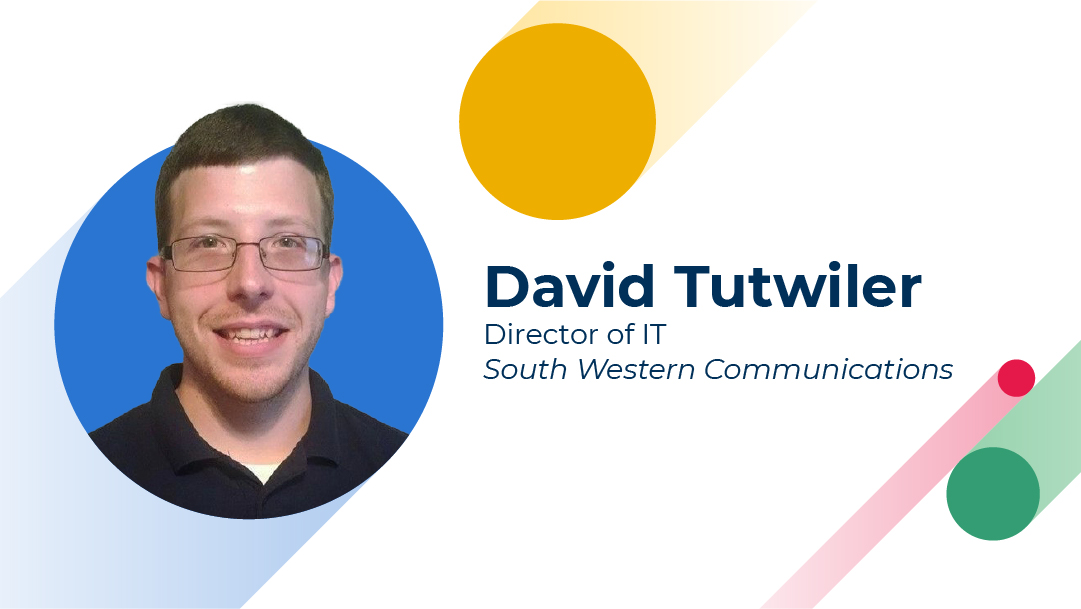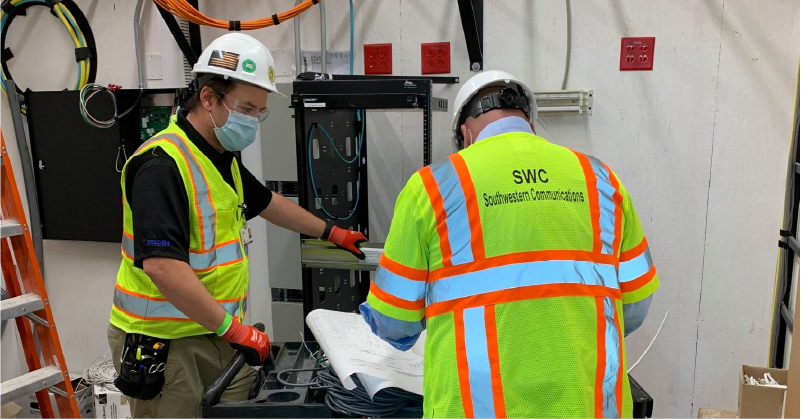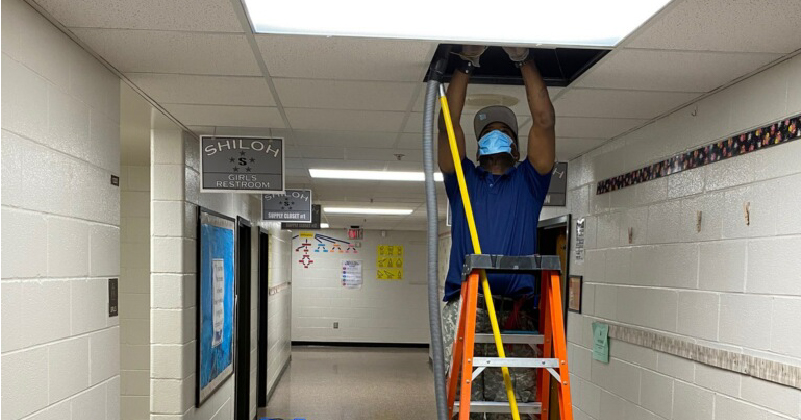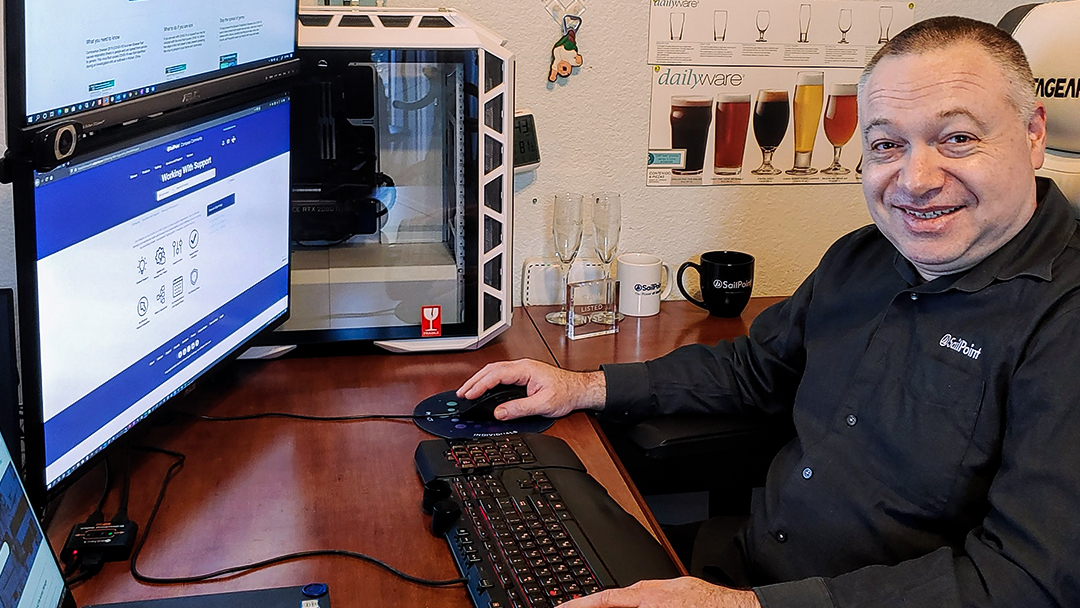Editor’s Note: Here at Smartsheet, our customers inspire us every day. This guest article comes from David Tutwiler, who works as director of IT for South Western Communications, a company that builds communication, physical security, and life-safety solutions for customers in healthcare, education, and more.
I never planned to work in IT. I went to college for aerospace engineering for propulsion, but discovered two years into that degree that I’m not the biggest fan of chemistry. However, I learned that I have a natural affinity towards computers, systems, and technical processes.
Over time, my wife and several key coworkers convinced me to pursue a career in IT. I completed a degree in computer science at a local school in Alabama, and soon after South Western Communications was looking to make a change in IT leadership.
As an IT department of one, I have to scale the entire company. I’m responsible for hardware, software, infrastructure, virtual private networks (VPN), compliance, on-prem servers, and any technology we plan to pilot or adopt. In addition, I’m the administrator for Smartsheet and Salesforce.
Considering the many things that fall under my purview, I’m obsessed with all things technology and building repeatable, quality processes. With all of these cross-functional responsibilities in tow, I quickly figured out that IT touches every part of the business. And while customer service is critical to the success of South Western Communications, it’s also critical to how I run the IT department.
Technology for the greater good
South Western Communications uses a consultative approach to providing communication, physical security, and life-safety solutions for our customers in a wide range of industries, including healthcare, education, and commercial. For example, we provide acute care technology, such as nurse call buttons for hospital patients, so they can contact staff in case of emergency.
As such, it’s a true source of pride for me to know that the work we do has a direct impact on peoples’ quality of life, safety, and overall satisfaction. When a patient hits that call button to communicate their need for assistance, we make sure the call flow works so that someone can help them as quickly as possible.
Since most of what we do is in the field, about 60% of our technician staff work exclusively in the field to install and maintain our systems. One of our goals is to reduce the burden on our technicians, since they do so much, are the face of our company, and work directly with customers. When we make the decision to invest in a new piece of equipment or technology, like Smartsheet, we need to know that it will greatly improve their processes and workflows.
When we build new workflows using Smartsheet, we don’t want to burden our technicians with processes that didn’t move the needle. This motivated us to develop an internal group that is responsible for building out new processes in the platform, and make sure that all of our technicians were submitting forms and uploading images (when needed) via the Smartsheet mobile app.
Now, those same technicians are using the platform, and they’ve told us that they're more efficient and empowered to suggest changes to improve the form intake process we set up in Smartsheet. It’s satisfying that the technicians are requesting Smartsheet licenses while making our process better — whether that’s suggesting we add new fields or a simple checkbox to let us know if a technical job will require a return visit for additional work. Ever since we gave them the power to contribute to the process, we’re seeing spikes in innovation.
A service-first approach to IT
Sometimes users can accidentally cause trouble — whether that’s falling for a phishing scam or cracking their laptop screen. But ultimately, they're the ones that I take pride in serving every day. Maintaining a customer-oriented mindset is an opportunity to revel in this really cool intersection of service and technology, especially with how much the latter is evolving, and positively impacting every part of the business.
At times, I get to sit in the driver’s seat and effect real change in people's lives, particularly in helping them be more effective in how they work. Anytime I can make something easier and efficient, or save somebody time on a project, process, or device — that’s what gets me fired up. These time-saving tweaks can also contribute to making South Western Communications more dynamic, as a whole, which helps us deliver better service to our customers.
To that end, customer service is critical. I could spend millions of dollars obtaining the greatest set of servers and computers and software packages in the world. But if it doesn't fit the needs of my users, it‘s going to be a waste of time, effort, and money. If our employees don’t use the technology, or they don’t think that it’s appropriate from the executive level all the way down to individual contributors, it makes less sense to invest in it.
This drives all the IT decisions I make, whether it be purchasing a product, providing service, or how I conduct myself on a daily basis. Making sure customer satisfaction drives our decisions improves our efficiency and effectiveness.
Our entire IT ticketing system runs through Smartsheet — many of our technicians prefer getting notifications in the app as opposed to opening up a bunch of email threads. They can easily check service ticket assignments, fill out the ticket, add comments, and upload everything right in the mobile app. It helps them prioritize what needs doing, all from their smartphones.
Prior to our process in Smartsheet and the mobile app, we had 35 documents to fill out via paper, Microsoft Word, or Excel. If we have 500 active projects, that can add up in a hurry. I love that by evolving these processes with the right technology, we can improve the work lives of our technicians, and go green by both reducing our digital footprint and taking paper-based steps out of the equation.
Keep on learning
While Smartsheet has helped fix up some of our processes, we’re always looking for new ways to use the platform for continuous improvement. Getting Smartsheet Certified put me on the fast track to making an impact in how we developed our use cases for Smartsheet.
At the time, no one at our company was an expert in Smartsheet, so we were all just trying to develop and figure things out on our own — in silos, if you will. The structured approach to learning in the Smartsheet Center of Excellence helped me prepare for the Certification exam, which helped me apply my skills to a hypothetical, real-world example. This was especially useful in getting up to speed at a much higher rate.
Since then, we strongly encourage everyone on our internal Smartsheet development team to get certified. I’ve even had the opportunity to lead a virtual IT user group for Smartsheet and contributed to Smartsheet Community (shoutout to the IT Professionals group). Both of these experiences are rewarding, since I get to connect with other IT professionals and offer advice on how to build solutions in the platform.
On a personal note, Smartsheet Certification is beneficial in other ways, as I offer my services as a Smartsheet consultant on Fiverr. I've been able to help people from all across the world with their Smartsheet integrations and much more, which brings a big smile to my face.
Learn more about how South Western Communications uses Smartsheet for IT projects, processes, and more.
And subscribe to the Smartsheet IT Newsletter for tips, strategies, and ideas focused on helping IT professionals increase their impact on their business.




